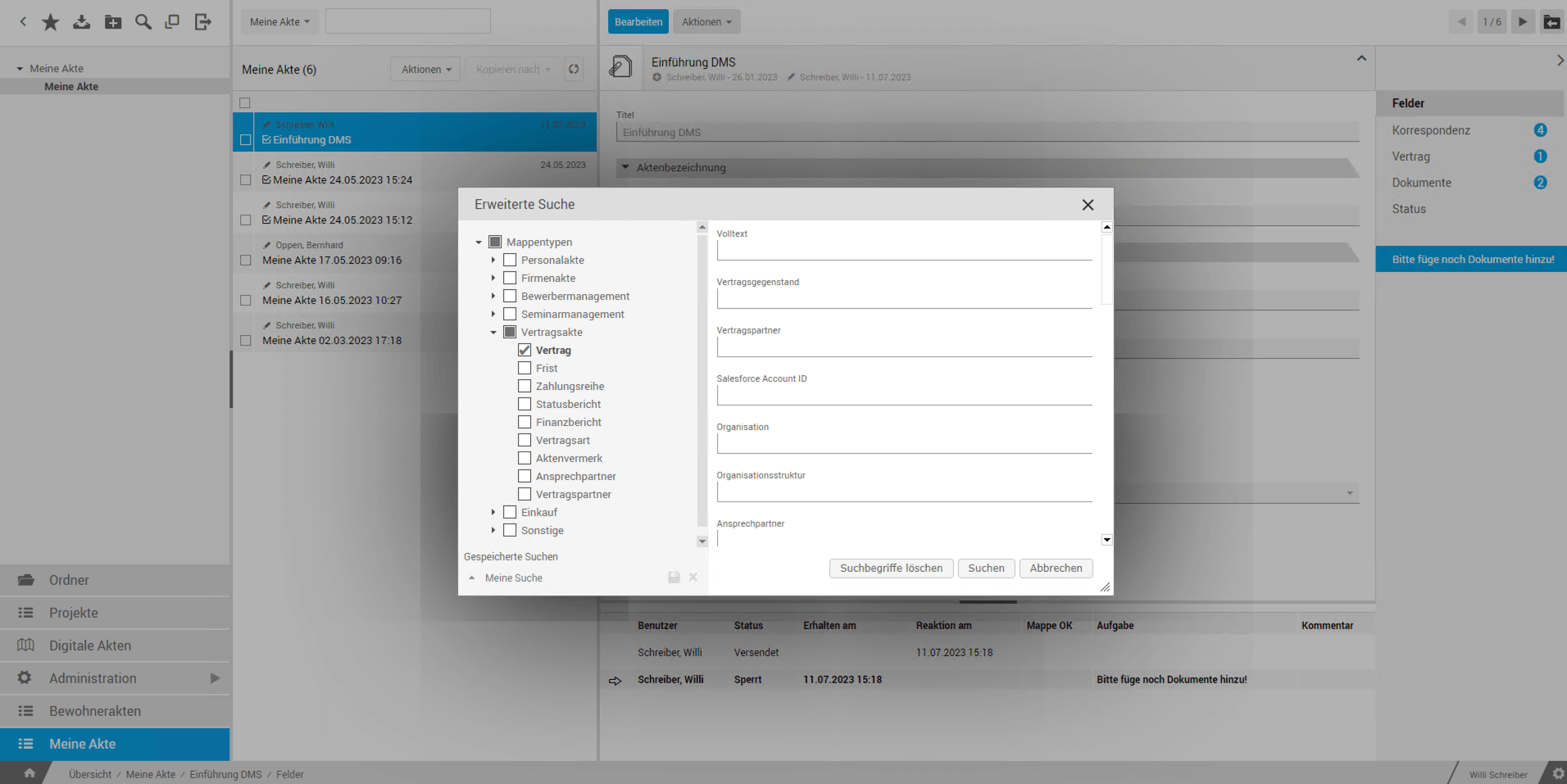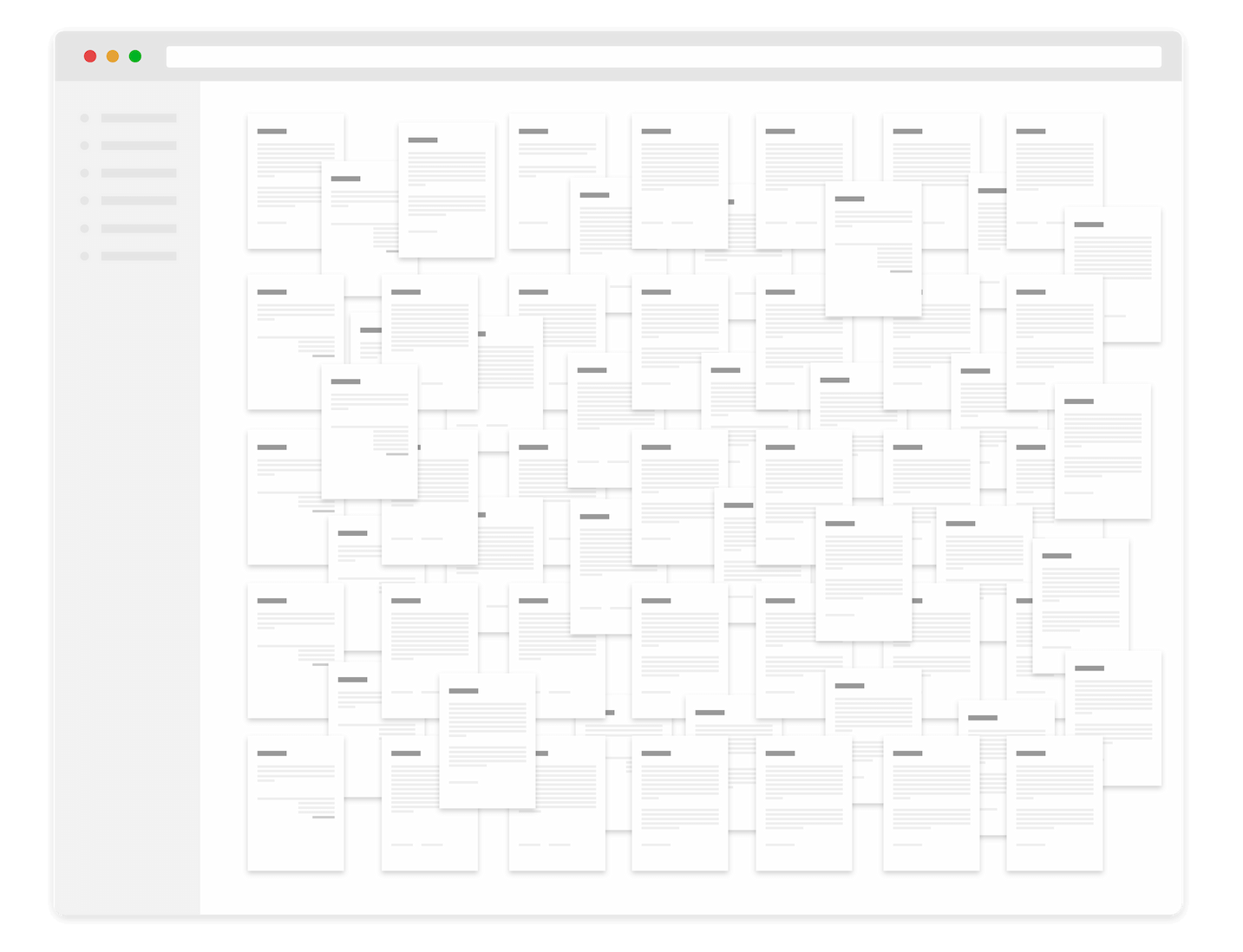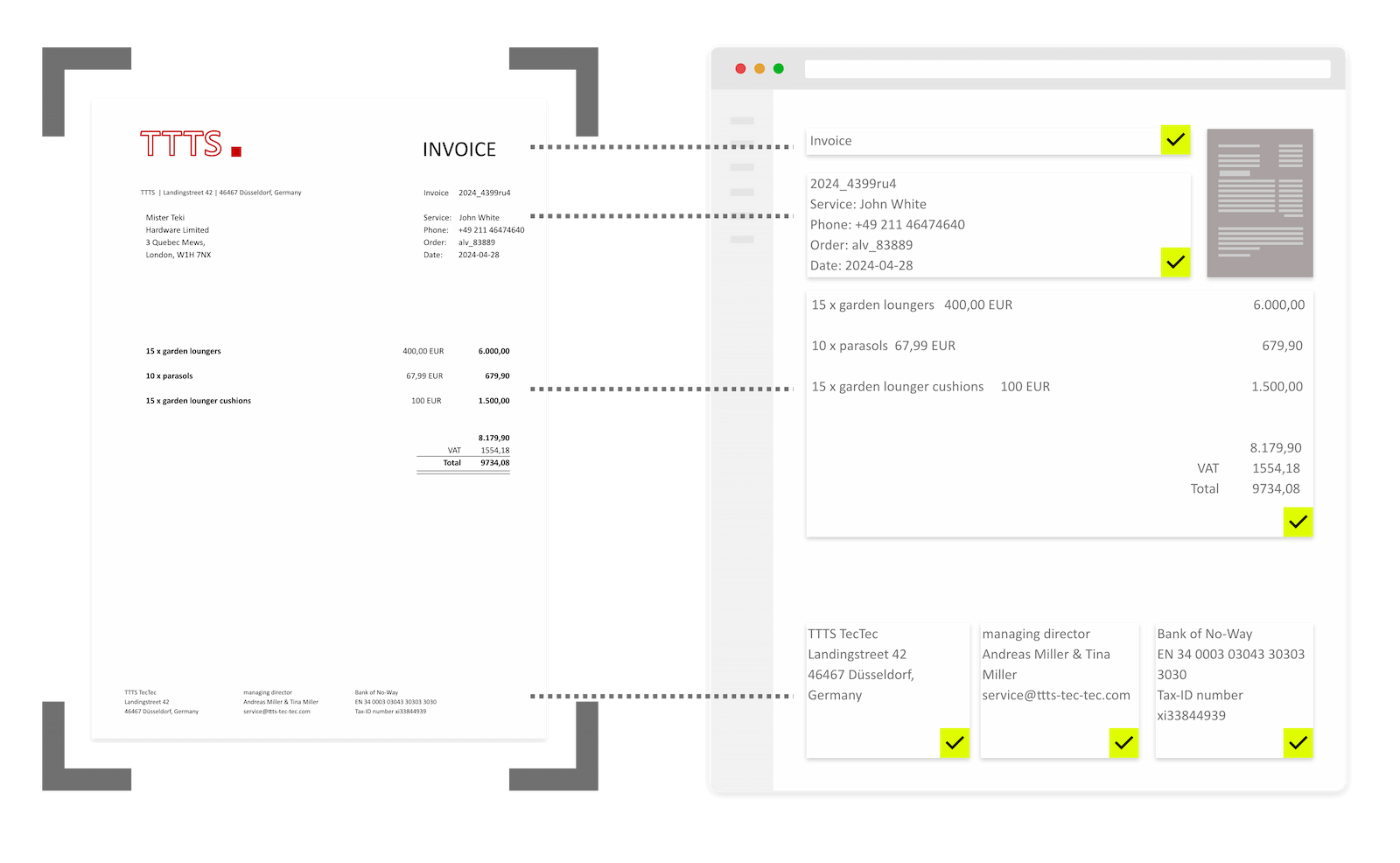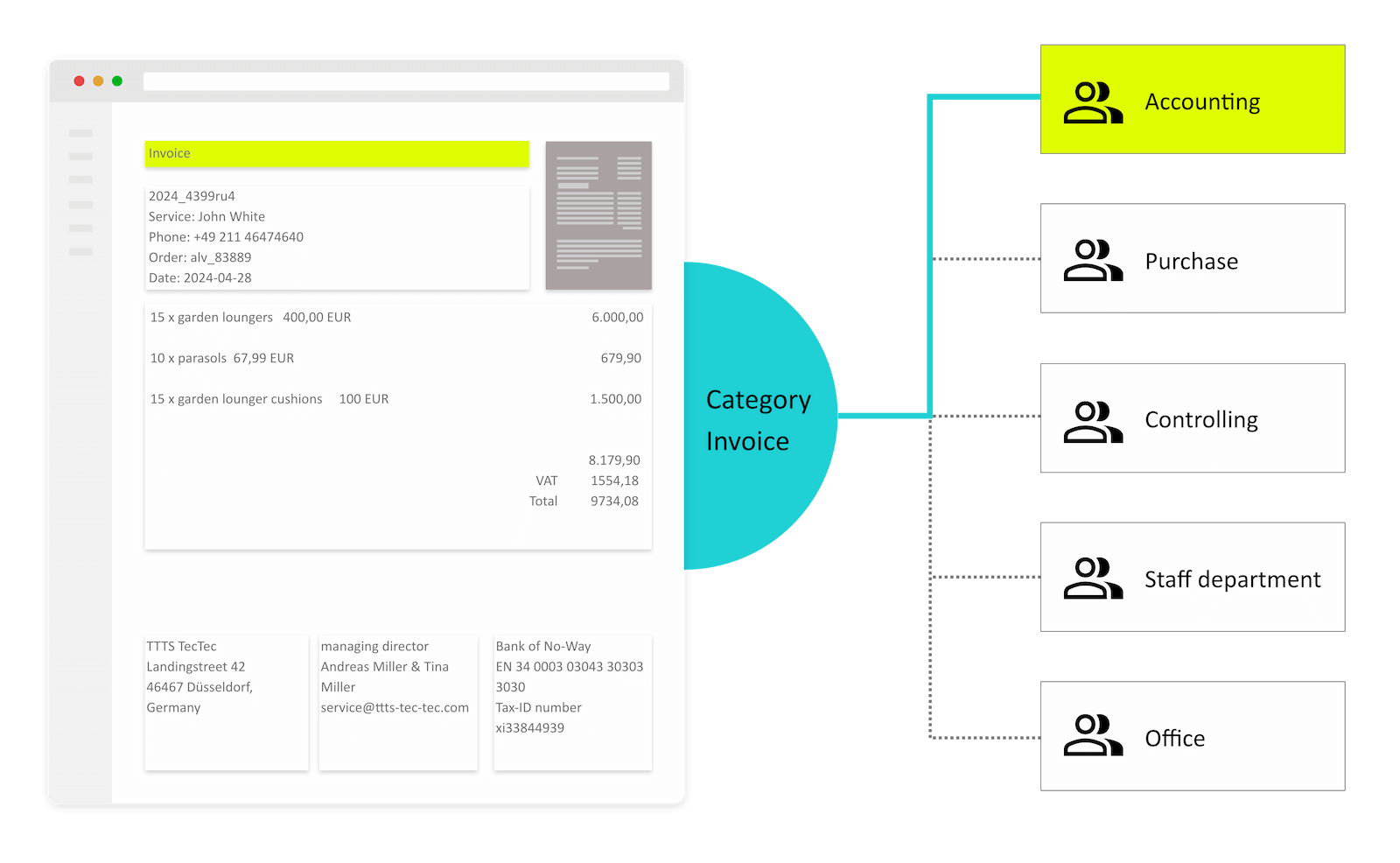What is digital document management?
Digital document management refers to the administration and organization of documents in digital form. Document management makes all office documents, PDFs, emails, CAD, graphics and audio files easily available within the company. At the same time, it controls access (who can view and/or edit which document) and the integration of upstream and downstream business processes, right through to document archiving.
Benefits of digital document management
- More transparency: structured archiving of all information and documents using DMS software
- Document management means greater process efficiency: easy information retrieval and rapid forwarding
- Better collaboration: central data storage enables document sharing
- High traceability thanks to document versioning and logging
- Meet SLAs reliably thanks to deadline management with multiple escalation levels
- Quick orientation: after a brief introduction, even new employees can work confidently with the DMS
- More flexibility with DMS software: Information is available any time, any place
- Low maintenance workload: thanks to centralized document management administration
- High security of stored documents thanks to a finely graded rights concept and detailed logging within the DMS software
What is a document management system (DMS)?
Document management systems (DMS) are usually database-supported software systems that handle the organization of electronic documents – regardless of format and content. The main task of a DMS is to capture and store documents and make them available throughout the organization. As such, a DMS can be seen as an extension of the archive. Document management also includes deleting and searching for documents.

There are essentially four different forms of DMS.
- Fileserver as DMS
- Database-supported document management systems
- Monolithic DMS
- DMS as a service (SaaS/Cloud)
In some ways, this distinction reflects the history of document management. It also helps highlight the advantages and disadvantages of the four DMS types.
Storing documents in tree-structured storage systems, such as file servers, network drives, inboxes and the like, swaps one problem for another: a paper one for a digital one. Documents disappear in confusing directory structures. And document storage alone requires discipline – from the agreed naming scheme for files to the correct storage location and keywording, assuming it is even possible at all. DMS software of this type generally proves to be inadequate for day-to-day document management.
Using such systems as a replacement for a document management system is counterproductive. The content of the documents is often not searchable, metadata is missing, not to mention workflows, versioning, etc. Only file names and directory paths serve as information carriers.
To summarize:
- Metadata, workflows, versioning are missing
- Confusing directory structures
- Document archiving requires discipline
- Documents are often not searchable

Today’s document management systems work according to the following scheme: A document is captured, specific document information is read, and a document ID is assigned. The document and the metadata are stored in a database. The big advantage: The ID ensures that the document remains clearly identifiable and is not lost in the DMS. The drawback: DMS software installed on the local computer is generally required to access the DMS.
Exceptions do exist, however. For example, there are document management systems that provide users with a browser-based DMS web client for their daily work. This eliminates the need to install software on the local computer. This always applies to a DMS in the cloud. In other words, such a DMS can be accessed via the browser from anywhere, even by smartphone/tablet. However, a cloud DMS offers even more advantages: As with many other software-as-a-service (SaaS) offerings, the provider also takes over the maintenance of the cloud DMS and ideally ensures the smooth operation of the document management system by performing such tasks as regular, automated backups. As such, a cloud DMS can also help reduce IT costs. However, the decisive factor is the content of the service contracts. Runtimes, number of users, data volume used, etc. are key factors that determine the costs of the cloud DMS.
To summarize:
- Document IDs makes a document clearly identifiable
- Access to the DMS via local software or web client
- With a SaaS DMS or cloud DMS, the provider takes charge of maintenance and operation

Depending on the DMS system used, electronic document management can offer various other functions. Important, frequently used DMS functions include:
- Audit security
- Versioning
- Archiving
- Requirements for data protection compliance
- Workflows
- Group-based authorizations
A document management system simplifies and speeds up day-to-day work immensely, especially for distributed organizations, i.e. companies with several locations.
Good to know
How does a DMS work?
The company keeps documents or, more generally speaking, information in two different forms: already in electronic form or still in paper form. This information must first be fed into the document management system – but how does this work and what then happens in the DMS?
Capturing information in the document management system
There are different methods of capturing documents in the DMS, depending on media type. If the information is already on hand in electronic form, document management systems are able to transfer this information to the DMS largely automatically. There are specific formats for this depending on the type of document – or, more generally, the type of information. To capture paper-based documents, on the other hand, a DMS generally uses a scanner for digital document capture.
Scanning and recognizing is the usual way for information in paper form to enter the document management system. This means that the documents have to be digitized first. One important aspect: The scanner’s scanning software or downstream software must feature optical character recognition (OCR). In this way, the textual elements of the document are captured and, ideally, classified accordingly – and this is the most important source of information for a DMS in this medium. As a rule, these processes for capturing content have matured and improved over the years, making them very accurate – as long as the data on the document remains consistent. Unfortunately, this is not always the case and therefore represents a small obstacle for the subsequent workflow.

Distributing information in the document management system
Starting now, everything will stay in digital form and there won’t be any more media gaps. A major advantage of a DMS is that all documents and information are automatically forwarded to the relevant departments of the company.
The DMS decides where the documents and information are ultimately sent based on the categorization made. Based on the information recognized and read out, the document management system decides whether a document is a delivery bill, an incoming invoice or a contract, for example. This is precisely where a DMS comes into its own: This is because workflows can now take effect in a modern document management system.

Features
Functions: What does a good document management system have to be able to do?
A modern document management system (DMS) should offer a wide range of functions to meet the requirements companies face today. It is more than just a digital file room. Here are the most important features that a good DMS should have:
DMS core functions
- Document storage and archiving: A DMS must enable secure and efficient storage and easy retrieval of documents.
- Central document storage: Documents must be stored centrally in one place so that they can be accessed at any time and from any location. This is how a DMS creates a single point of truth.
- Versioning: The ability to manage different versions of a document and track changes is essential.
- Access control: A good DMS must make it possible to determine who can access, read and edit which documents.
- Workflow management: The automation and optimization of business processes by means of workflows offers great advantages, especially when it comes to document management:
Workflows support the processing, approval and archiving of documents in the DMS through automation. This speeds up the flow of business processes and minimizes manual intervention, which also reduces the likelihood of errors. - Integration with other systems: A DMS must be able to integrate seamlessly with other company software, such as ERP or CRM systems. This results in a standardized overview and other synergy effects.
Security features
- Encryption: Documents should be encrypted while stored in the DMS and must be encrypted at least during transmission to ensure security.
- Access controls: Document management must have mechanisms in place to prevent unauthorized access, such as two-factor authentication.
- Backup copies: Regular backups are important to prevent data loss.
User-friendliness
- Intuitive user interface: A DMS must be easy to use in order to increase user acceptance.
- Mobile accessibility: The ability to access the system from various devices and locations is considered essential nowadays.
- Search functions: Powerful search functions help users find documents quickly and efficiently.
What needs to be taken into consideration with a DMS?
Of course, document management systems in particular must also meet certain legal requirements. In Germany, several important legal texts and other details should be mentioned at this point. Everything revolves around retention obligations and data protection. It should be understood that nothing written here constitutes legal advice; the aim is only to raise awareness of how extensive the requirements are.
In most cases, a DMS system also has an archive or an interface between the document management system and the archive system. You should definitely pay attention to this option. The reason is obvious: On the one hand, you want to reduce the load on the document management system. On the other, you are faced with the task of having to archive certain types of documents for six or ten years. As a rule of thumb, everything that is no longer needed for day-to-day work should be moved from the DMS system to the archive. This relieves the burden on the production system. Documents of this type include wage payments, HR files, annual financial statements, invoices and much more.
Modern document management systems have this function for archiving or connecting to an archive.
Daily use of the archive is also fairly easy. This is because you start the search (also known as information retrieval) for archived content directly from the DMS application. Thanks to keywording, existing metadata and information obtained from full-text processes (OCR), you can find the exact search result in the document management system more quickly.
First of all: Who does the retention obligation apply to? Anyone who is required to keep accounts under commercial or tax law is also required to retain them.
This immediately raises the next question: What kind of documents need to be retained in the document management system and for how long?
Once the earmarking (in this case: retention obligations) has expired, the GDPR applies – with the result that a document management system must be able to delete certain documents and personal data. A modern DMS must be able to handle this deletion function. The GDPR also requires the document management system to enable a customer to request information at any time: This makes it a question of clearing up whether and for what purpose personal data is retained – and if so, what data is involved. In short: The DMS system must offer the option of making this data available to the person seeking information.
Document management with easy
As soon as the document management system serves as the basis for the domain-specific application, the full benefits of following this approach for the business process at hand become quite clear. This is also the case with easy DMS: with easy invoice, easy contract, easy HR and easy archive, easy simplifies collaboration between all departments.
FAQ on digital document management
What does document management mean?
Document management is the systematic administration of documents in companies or organizations. It includes the capture, storage, filing, organization, provision, distribution and processing of documents, both in digital and physical form. A document management system (DMS) is the software-based implementation of this concept.
What is a document in the context of a DMS?
Examples of a document include invoices, contracts, employment references, etc. A document stored in a DMS system generally contains more information than just the pure content of the document.

Additional information that accompanies the document is referred to as metadata. This metadata is also assigned to the document, such as:
- Project number and name
- Creation date
- Version
- Status
- Cost center
- Reviewer, etc.
The metadata can either be obtained automatically from the document or added to the DMS by manual keywording. When consistently and uniformly implemented, this helps with finding documents quickly. In addition, documents from a process can easily be grouped into folders. It should be clear by now why a document management system is practically the holy grail of information management.
What is a DMS?
A document management system (DMS) is a software solution for managing, storing and providing documents in digital form.
Who needs document management?
Document management is important for any organization or company that needs to manage large volumes of documents. The DMS provides the necessary tools and methods. A carefully planned digital document management solution lays the foundation for:
- Increased efficiency: Faster and easier document management.
- Cost reduction: Lower paper consumption and physical storage costs.
- Increased security: Protection of sensitive information through access control and encryption.
- Better collaboration: Allows multiple users to access and edit documents at the same time.
Why bother with digital document management at all?
Digital document management is an indispensable part of modern business management. Compared to paper-based management, a document management system offers considerable advantages by meeting the requirements for flexibility and location-independent collaboration while also accelerating processes.
Document management is therefore more than just a modern solution; it is a strategic decision with long-term benefits. It improves efficiency, security and collaboration within the company and also contributes to cost savings.
How can a DMS be integrated into existing company systems?
Document management systems and the ERP connection
The full benefits of a DMS can only be realized when it is linked to enterprise resource planning (ERP) systems. When selecting a document management system, it is therefore important to ensure that the DMS has the appropriate interfaces or APIs to the ERP systems used. Because: Both systems, DMS and ERP system, complement each other at this point.
How does this work and what are the benefits?
To illustrate: While the ERP has supplier master data, an incoming invoice enters the company via the document management system, for example. It may happen that certain data is missing from the incoming invoice document. As a result, the incoming invoice workflow may not start for this very reason or may stop at a very early stage. By accessing the ERP system, the missing data is completed and the workflow can continue in the DMS.
The whole process can also be fully automated: A fully automated workflow can be created from the incoming invoice in the DMS and the content comparison with the master data of the ERP system, together with a mathematical check of the totals and whether there is a purchase order for the invoice. At the end of the workflow, the data is transferred to the posting in the ERP. In addition, all documents created in the ERP system can ultimately be archived in the DMS system in an audit-proof manner and simultaneously bundled and merged with other documents within the DMS to form a process. The combination of document management system and ERP system therefore creates an enormous automation of workflows.
Connection of the dms system to the Microsoft Office world
A seamless connection to common Microsoft products (Word, Excel, Outlook, etc.) is a must for a modern document management system. If only from the user’s point of view, because who wants to constantly switch between different applications these days? Nobody. Ideally, the DMS system should connect the applications mentioned so well that, for example, a Word document can be opened, edited and saved directly in the document management application.
Connection to signature service providers
In order to keep your work processes digital throughout, the option of electronic signatures, for example with easy eSignature, can be easily connected to the DMS. This means that documents can be digitally signed and sent regardless of time and place – legally valid and secure. This not only speeds up your processes, but also ensures greater transparency.
What tasks does a document management system fulfil?
The core tasks of a document management system are to store, save, manage and retrieve documents. As an organizational tool, the DMS automates processes, improves collaboration and ensures compliance with legal regulations. Here is an overview of the core tasks:
- Organizing and structuring documents in business processes
- Establishing access control, ensuring security
- Versioning documents and documenting the revision history
- Optimizing processes through workflow management
- Complying with legal regulations
- Promoting collaboration and communication
- Simplifying and optimizing document searching and retrieval
What is included within a document management system?
A document management system comprises various components and functions. All of them help ensure efficient and secure document management. Here are the essential components of a DMS:
Core components
- Document capture: This includes scanning, uploading or importing documents via various channels into the document management system.
- Document storage: Secure storage of documents for easier access and better retrievability.
- Organizing and structuring: The DMS organizes documents in a logical structure, often in the form of folders and categories.
- Versioning and document history: Version management of changes to documents so that previous versions can be restored.
- Workflow management: Helps with the structured management and processing of documents, especially with process automation.
- Auditability and compliance: The DMS lays the groundwork for compliance with legal regulations and internal guidelines.
- Collaboration and communication: DMS functions for joint editing and commenting of documents improve team collaboration.
Extra components
- Mobile accessibility: An advanced document management system also allows users to access the DMS via mobile devices. This increases flexibility and productivity.
- Artificial intelligence and automation: AI-supported functions such as automatic classification, text recognition (OCR) and workflow automation significantly increase the efficiency and accuracy of document management.
- Integration with other systems: Document management should integrate seamlessly with other company software (ERP, ECM, accounting systems, etc.). To make this possible, it must have suitable interfaces. The result: a better overview and increased efficiency.